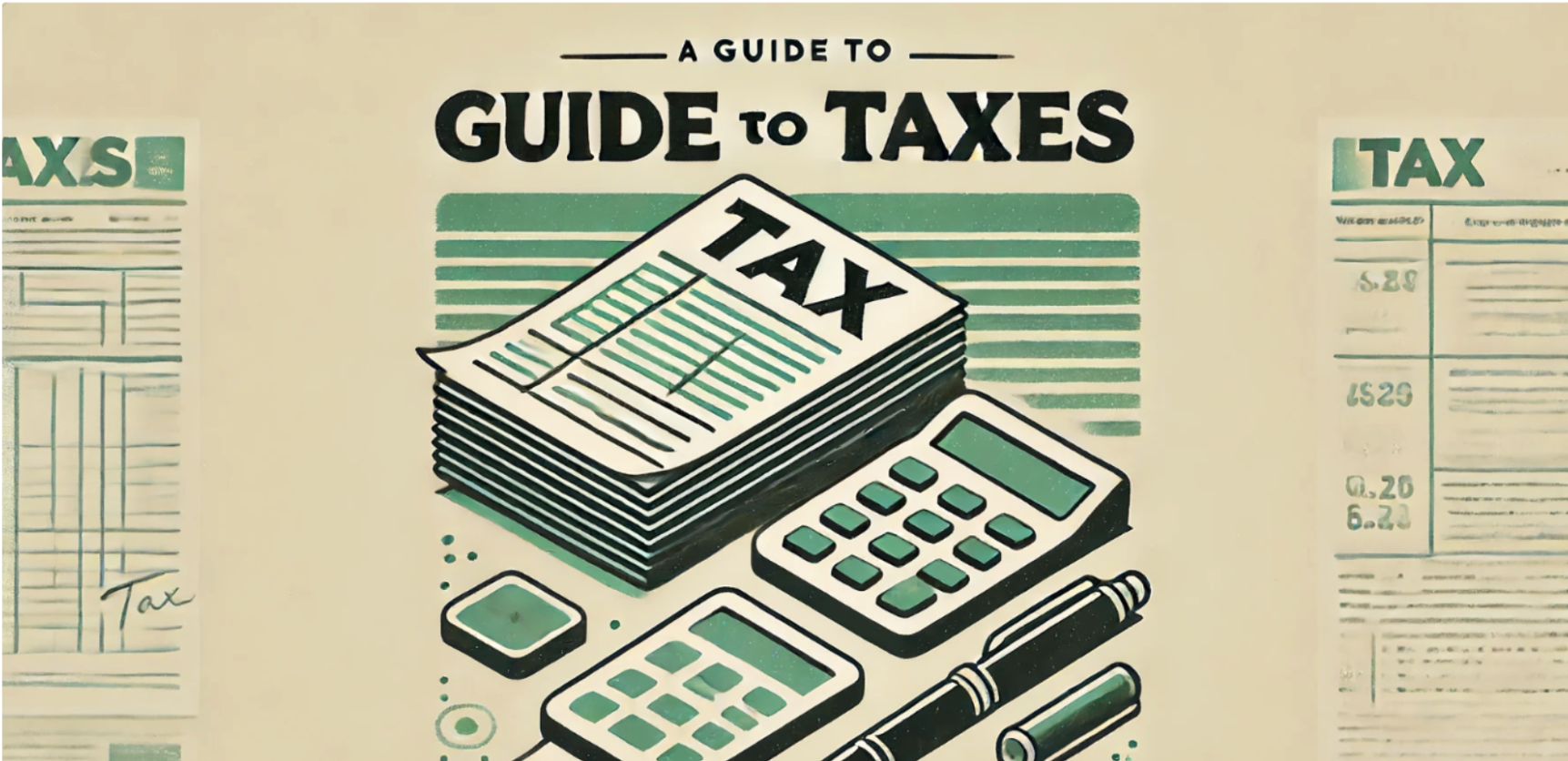A College Graduate’s Guide to Understanding and Managing Taxes

New college graduates entering the workforce will face a multitude of “firsts.” Coming fresh out of college, recent graduates will learn “adulting” skills like paying bills for the first time, earning and leveraging a paycheck for the first time, and for most, filing taxes for the first time. Filing taxes may seem scary, and many questions will be confusing upon seeing the list of questions that you will face. To make things easier, we’ve broken down some key items you need to know to file your taxes more smoothly.
Before we dive into W-4 forms and different filing options, let’s start with a basic introduction to what filing taxes is for and why it’s necessary. In short, taxes are a mandatory part of the American economy, funding essential services like Social Security, national defense, and education. Most recent graduates might be familiar with sales tax, where an item priced at $9.99 costs a bit more at checkout. However, there are other types of taxes, such as payroll and property taxes. The amount you pay depends on your income, the property you own, and your investments. Once you start earning above a certain income threshold, you must file taxes. This is why many recent graduates file their taxes for the first time after starting a full-time job.
Key Tax Terms to Know
Taxes are mandatory contributions to state revenue, imposed by the government on workers’ income and business profits, or added to the cost of certain goods, services, and transactions. These taxes fund public goods and services such as infrastructure, education, and healthcare, serving various purposes at the local, state, and federal levels.
Understanding these general tax terms can help you maximize your financial opportunities and minimize your tax burden:
Tax Brackets
The U.S. federal income tax system is progressive, meaning the tax rate increases as your taxable income rises. Different portions of income are taxed at different rates, with seven federal tax brackets ranging from 10 percent to 37 percent. The IRS adjusts these brackets for inflation annually. Effective tax planning involves knowing your tax bracket and utilizing strategies to lower taxable income through retirement contributions and eligible tax credits.
Filing Status
Your tax filing status in the United States determines various aspects of your tax obligations, such as filing requirements, standard deductions, eligibility for certain credits, and the amount of taxes owed. The IRS offers five filing statuses:
- Single: For individuals who are unmarried, legally separated, or divorced as of the last day of the tax year.
- Married Filing Jointly: For married couples filing a joint tax return. This status often results in lower taxes and access to benefits like education credits and earned income credits.
- Married Filing Separately: For married individuals who choose to file separate tax returns. Some tax benefits may not be available with this status.
- Head of Household: For unmarried individuals providing a home for a qualifying person, such as a dependent child, grandchild, sibling, or parent. This status offers a lower tax rate compared to single filers.
- Qualifying Widow(er) with Dependent Child: For surviving spouses in the two tax years following the spouse’s death. It allows the use of married filing jointly tax rates on an individual return.
W-4 Form Overview
The W-4 form, officially known as the “Employee’s Withholding Certificate,” is a crucial document that employees use to communicate their tax situation to their employer. By providing information on this form, employees assist their employers in determining the correct amount of tax to withhold from their paychecks.
The W-4 form consists of various sections where employees can input information about their tax situation. These sections include:
- Personal Information
- Income Adjustments
- Deductions
- Tax Credits
It’s crucial to fill out the W-4 form correctly as it can significantly impact the amount owed during tax filing. If too little is withheld, individuals may end up owing a substantial amount at tax time. Conversely, if too much is withheld, a sizable refund may be received, but this essentially means providing the government with an interest-free loan throughout the year.

Tax Planning Tips
Once you have a good grasp of tax basics, you can start optimizing your tax planning. Here are some key areas to focus on:
Mastering Tax Deductions vs. Credits
- Deductions: Reduce your taxable income. Examples include mortgage interest, charitable contributions, and medical expenses. You can either itemize these deductions or take the standard deduction.
- Credits: Directly reduce your tax liability. Examples include the Earned Income Tax Credit (EITC) and education credits like the American Opportunity Credit and the Lifetime Learning Credit. Credits can be refundable or nonrefundable.
Student Loans and Retirement Savings
- Student Loan Interest Deduction: Deduct up to $2,500 of interest paid, even if you don’t itemize deductions.
- Retirement Savings: Contribute to a 401(k) or traditional IRA to reduce your taxable income. Employer matching can boost your savings.
- Savers Credit: For low to moderate-income earners, this credit reduces your tax bill based on retirement contributions.
- Lifetime Learning Credit: Worth up to $2,000 per tax return, it helps offset the cost of continuing education.

Understanding Student Loan Forgiveness
Federal student loan forgiveness is nontaxable through December 31, 2025, under the American Rescue Plan. Stay informed about state tax regulations as some states may still tax forgiven student loans.
Healthcare Options and Tax Strategies
- Health Savings Accounts (HSAs): Contributions are tax-deductible, and withdrawals for qualified medical expenses are tax-free.
- Flexible Spending Accounts (FSAs): Use pre-tax dollars for eligible medical expenses to lower taxable income.
Strategies to Reduce Your Tax Burden
- Maximize contributions to retirement accounts (401(k)s, IRAs).
- Use HSAs and FSAs for medical expenses.
- Consider tax-advantaged investments like municipal bonds.
- Engage in estate planning to manage future asset distribution and taxes.
- Convert traditional IRAs to Roth IRAs for tax-free growth and withdrawals.
- Implement asset location strategies and manage income timing to avoid higher tax brackets.
- Set up 529 plans for tax-free growth of education savings.
Figure 1: Retirement Savings Can Start Early

Make It Easy: A Simple Recap
Navigating taxes for the first time can be challenging, but understanding a few key points can make it easier:
- Review employee benefits, healthcare, and retirement plans.
- Check payment options for student loans and eligibility for education credits.
- Utilize deductions and credits to reduce your tax burden and set a solid financial foundation.
- Consult with a tax professional for personalized guidance and to maximize tax benefits.
By staying informed and making strategic financial decisions, young professionals can effectively manage their taxes and build a strong financial future.
For more financial tips and marketing strategies, check out our other articles here.
The information provided in this blog is for informational purposes only and should not be considered financial advice. HIFI is a marketing agency and not a licensed financial advisor. Always consult with a qualified financial advisor or professional before making any financial decisions. HIFI is not responsible for any financial decisions made based on the content of this blog.
Like what you're reading?
Sign up for our Financial Experience Newsletter.
